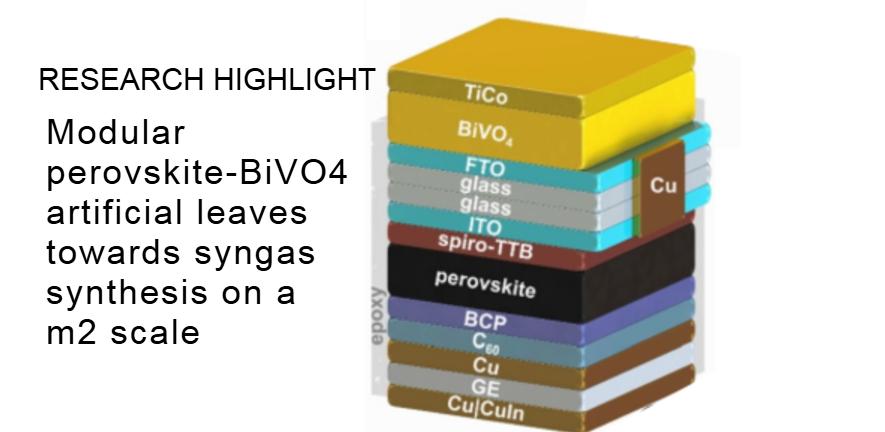
Syngas, a mixture of H2 and CO, is a key industrial intermediate in the production of liquid fuels through the Fischer-Tropsch process. Research results demonstrate that thermal evaporation can contribute significantly towards solvent-free, scalable and reproducible manufacturing of perovskite-based artificial leaves.
The report describes the insights gained by a University of Cambridge team throughout the competition, from advances in device and catalyst design for unassisted syngas synthesis, to the practical engineering challenges encountered during outdoor testing of a 0.35 m2 solar fuel reactor
Broader Context
Syngas, a mixture of H2 and CO, is a key industrial intermediate in the production of liquid fuels through the Fischer-Tropsch process. Hence, solar-driven CO2-to-syngas conversion is a key strategic goal towards securing a sustainable carbon economy. This is reflected through support from policymakers including the U.S. Department of Energy or European Commission. To this end, the €5 million EIC Horizon Prize “Fuel from the Sun” was launched in 2017 to incentivise research on direct light-driven fuel production beyond water splitting, and accelerate the translation of these technologies from laboratory prototypes towards real-world applications. This report describes the insights gained by a University of Cambridge team throughout the competition, from advances in device and catalyst design for unassisted syngas synthesis, to the practical engineering challenges encountered during outdoor testing of a 0.35 m2 solar fuel reactor.
Read the research paper: Modular perovskite-BiVO4 artificial leaves towards syngas synthesis on a m2 scale, Virgil Andrei, Yu-Hsien Chiang, Motiar Rahaman, Miguel Anaya, Taeheon Kang, Edoardo Ruggeri, Samuel D. Stranks and Erwin Reisner. Energy & Environmental Science (January 2025)

